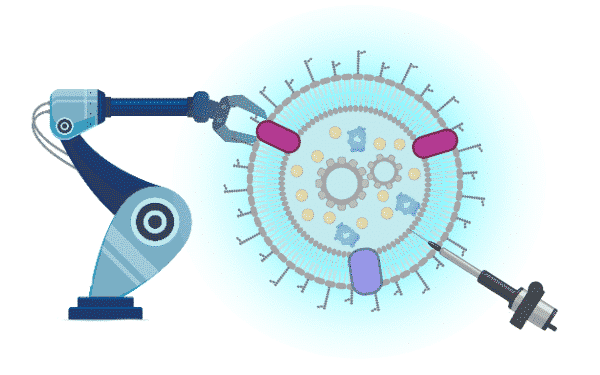
Synthetic cells with self-activating optogenetic proteins communicate with natural cells
2The Norman Seiden Multidisciplinary Program for Nanoscience and Nanotechnology, Technion - Israel Institute of Technology, Israel
3Department of Biomedical Engineering, Technion - Israel Institute of Technology, Israel
4Lorry Lokey Interdisciplinary Centre for Life Sciences and Engineering, Technion - Israel Institute of Technology, Israel
5The Interdisciplinary Program for Biotechnology, Technion - Israel Institute of Technology, Israel
6The Rappaport Faculty of Medicine and Research Institute, Technion - Israel Institute of Technology, Israel
7Department for Cellular Biophysics, Max Planck Institute for Medical Research, Germany
8Institute for Molecular Systems Engineering (IMSE), Heidelberg University, Germany
9Cardiology Department, Rambam Health Care Campus, Israel
10Faculty of Biology, Technion - Israel Institute of Technology, Israel
The field of synthetic cells (SCs), micron-sized constructs designed from the bottom-up, is rapidly developing with potential applications for basic and translational research. Recently, SCs have been used as models to investigate the origin of life, isolate and study cellular processes and as potential therapeutic and diagnostic systems. Controlling cellular processes inside SCs and integrating them with living tissues is important for realizing these applications, particularly for the utilization of SCs as drug-producing micro-factories inside the body. Although light offers an attractive way for regulating cell functions, its use is limited by its restricted penetration depth into tissues. We engineered SCs that produce light through bioluminescent reactions and activate cellular processes in synthetic and natural cells, dismissing the need for an external light source. These engineered SCs communicate with innate fungal cells through bioluminescence, and activate fungal sporulation in a quorum-sensing like mechanism. To achieve intracellular signaling in SCs, we designed bioluminescent self-activating fusion proteins that employ bioluminescence resonance energy transfer to activate an inherent light-responsive domain and mediate transcription and membrane recruitment of proteins. These functionalities lay the groundwork for utilizing SCs as embeddable light sources that stimulate cellular processes inside tissues and set the stage for advancing from single SCs to synthetic tissues.

(1) Adir, Omer, et al. "Bioluminescent Synthetic Cells Communicate with Natural Cells and Self-Activate Light-Responsive Proteins." bioRxiv (2021).
(2) Adir, Omer, et al. "Preparing Protein Producing Synthetic Cells using Cell Free Bacterial Extracts, Liposomes and Emulsion Transfer." JoVE, 158 (2020): e60829.
Powered by Eventact EMS